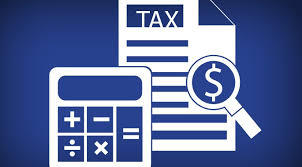
Oh, what good news it is for taxpayers – that there is a program that allows them to pay way less than what they owe. This is called the IRS Offer in Compromise (OIC).
However, there are many pieces of information about the program flying around that are not true. Even though many ads imply that this is a standard solution for many people, only a handful qualify. In fact, about 0.001% of taxpayers qualify.
The reason is that the IRS assumes that most taxpayers can afford taxes with their assets or by setting up a repayment plan.
The OIC targets a specific set of people – only those without the financial capacity to take care of their debt with current and future assets. The IRS believes that many people can make do with other alternatives to OIC that will serve their situation.
Here is some information on the OIC that taxpayers need to understand:
Contesting taxes and Penalties Owe Might be Better.
It is a good idea to explore your past returns and balances owe as it can help reduce your taxes. You might not have the experience with this, but a tax professional might be able to help. You could also qualify for penalty abatement if you are eligible.
All you have to do is consider past returns. It might reveal that you owe less than what you thought you owed. Eventually, you might not need an OIC.
OIC involves Mathematics, not Negotiation
What determines your qualification for OIC is your inability to pay the tax with your asset and future income before the expiration of the collection statute of limitations. Uncle Sam calls it a reasonable collection potential. Here is an example that sheds light on it:
A taxpayer owes $25,000 on April 15, 2019, for a 2014 return. He submitted an OIC on April 15, 2015.
In asset, his net equity is $800 and monthly disposable income of $150
He has collection statute expiration date of April 15, 2025 (six years, remain on the collection statue)
For over 72 months, the $150 adds up to $10,800; add the $800 in net equity, and you get an RCP of $11,600. This is like $13,000 less than the amount owed. This taxpayer will qualify.
It doesn't get more straightforward than that. The only issue is determining the asset values, assets that fit in an OIC, average monthly income, and others. The IRS limits the allowable living expenses meaning that you cannot put whatever you want in an OIC application.
OIC Application Fee and Down Payment Could Be Huge
You will have to pay $186 to file an OIC. The taxpayer might also have to pay the offer amount with the OIC application while the investigation and OIC verdict is ongoing.
Lump-sum payment OIC needs a 20% down payment of the amount offered in the application.
While the OIC investigation is ongoing, taxpayers could make 24 installment payments for periodic OIC payment.
During the investigation of the OIC, a low-income applicant could avoid the fee and down payments.
It is essential to understand the financial cost of applying for OIC. Should the IRS reject the OIC, the fee alongside the down payment will be put towards tax liability. Paying this fee upfront could result in substantial financial stress, especially if the application is not successful.
Taxpayers must prove they Qualify for OIC.
For DATA-OIC to be successful, taxpayers must prove they can pay. They will prove everything – monthly income, asset values, and living expenses.
Unpaid bills do not qualify. There are some expenses classified as unnecessary, like recreational assets, charitable contributions, etc. You need to get these values right to determine whether you qualify.
More often, the IRS could disprove these amounts, impeding your qualification for an OIC or asking for a higher cost. The inability to pay will lead to rejection of the OIC.
Not everyone is a Good Fit for OIC.
Be careful of adverts from tax relief firms as they make it seems that they will get your debts off with their experience using the OIC.
If you do not qualify for OIC, there is no magic these tax firms can do to make you qualify. On the other hand, there are IRS payment plans that will be a terrific option. For taxpayers in severe financial hardship, there is the option to pay a little amount. They can also go for the temporary hardship status in which they will not have to pay.
